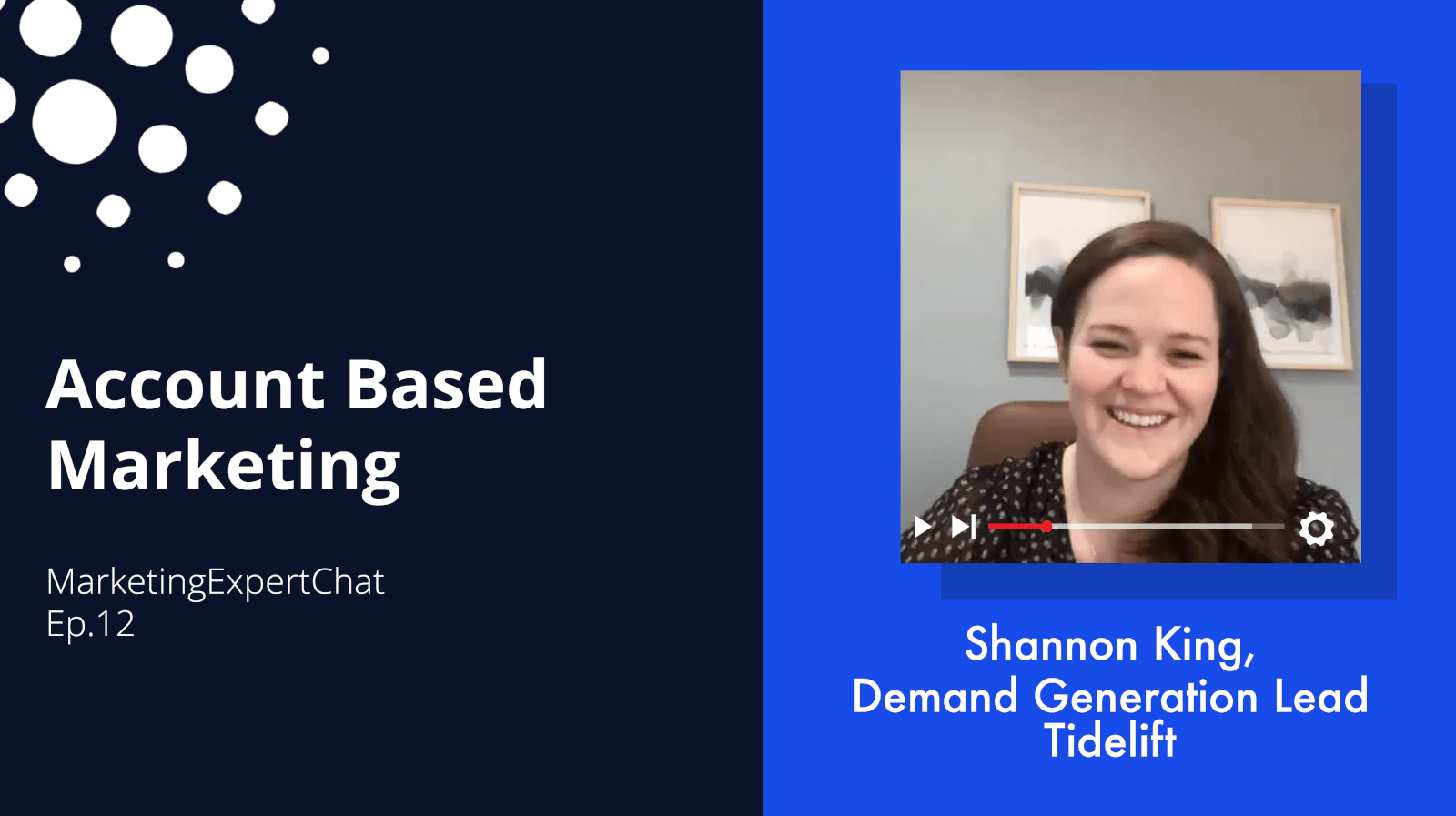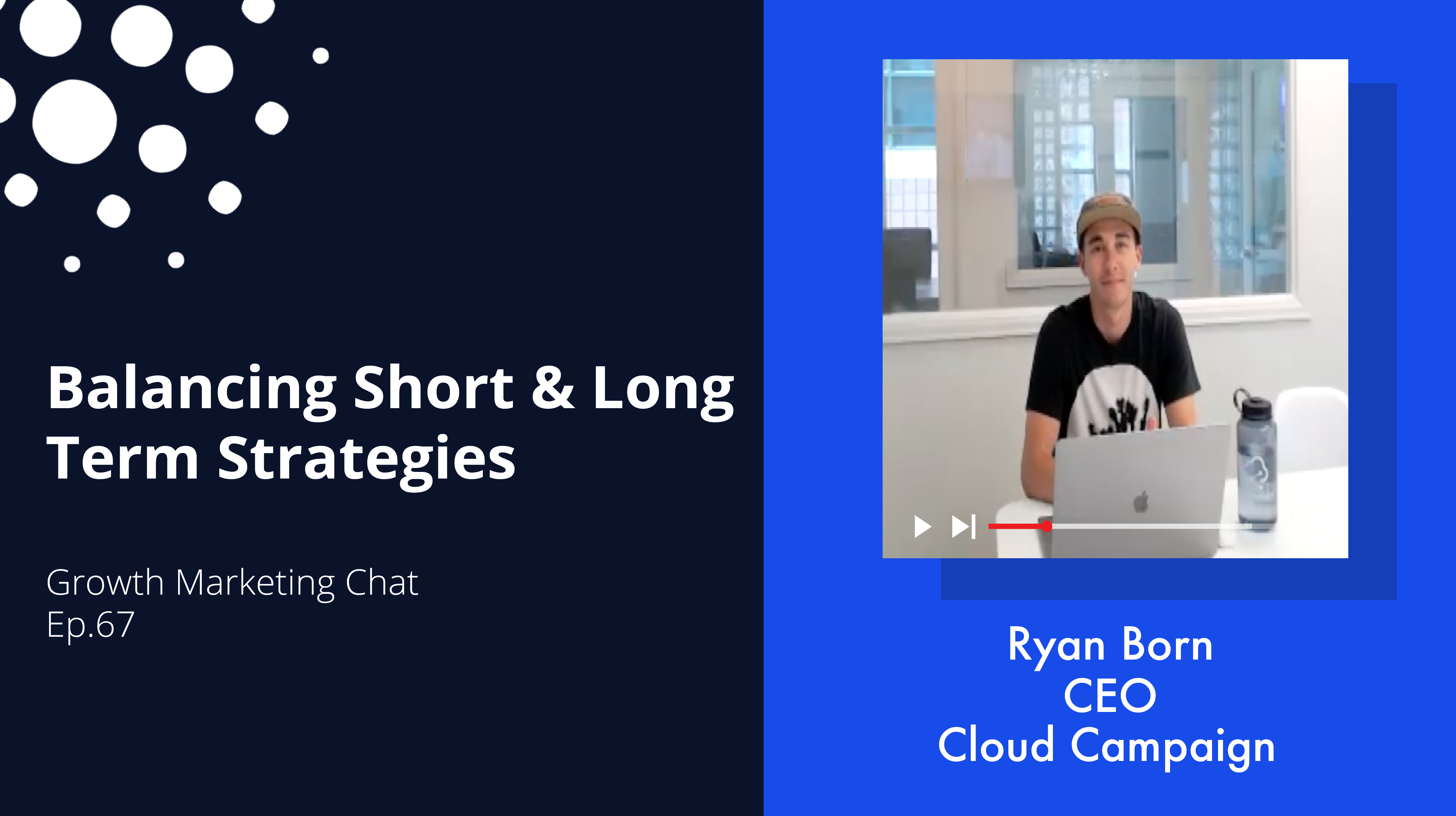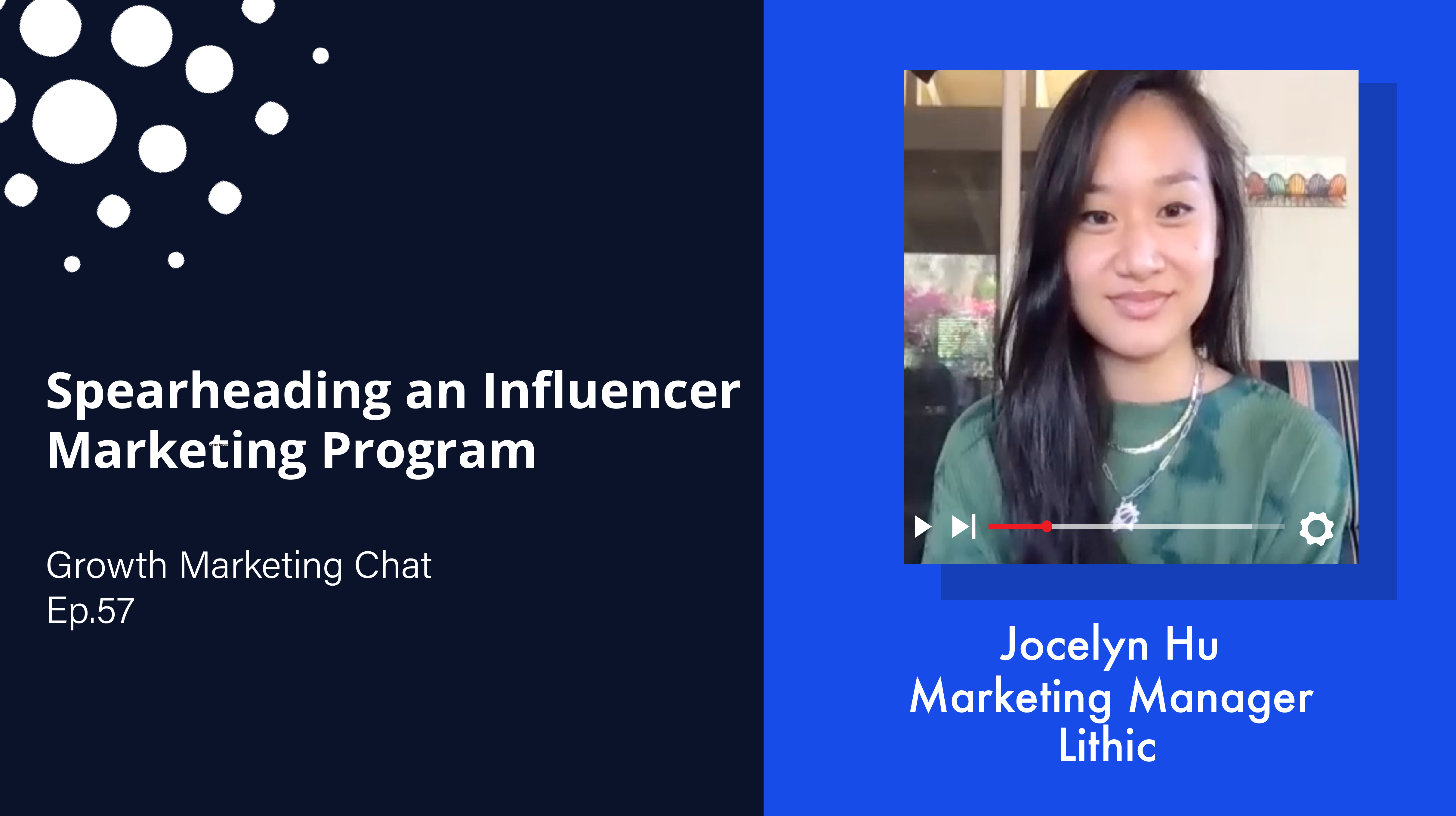Have you ever experienced any bottlenecking issues in your sales funnel? Maybe, particularly with contacts failing to move out of the MQL stage?
This is a pretty common problem many marketers and sales experts experience.
In order to set your revenue marketing strategy up for success, you need to have a solid demand gen strategy in place. Creating alignment between marketing and sales on the demand gen strategy is key to achieving your goals.
Up Your Demand Gen Game
To explore some of the solutions to avoid blockages in the sales funnel, we invited Scott Logan, VP of Marketing at Kronologic, to share his expertise on:
-
How to move MQLs through the funnel
-
Ways you can empathize with and assist your SDRs
-
The importance of making even your meeting invites engaging for your prospects
-
And a lot more great topics!
Watch this episode of our Marketing Expert Chat series to better understand how to remedy any bottlenecking issues in your demand gen process and start making improvements today!
Video Transcript:
CAROLINE: Hi, today I’m here with Scott Logan. Scott is a B2B demand gen expert and he is the Vice President of Marketing at Kronologic. Scott, thank you so much for being with me today.
SCOTT: Yeah, thanks for having me.
CAROLINE: So, today we’re gonna talk obviously about demand gen. And so, as marketers, I think we’ve all seen a great number of this MQLs at one point staying stuck in that MQL stage. And I think it’s a nightmare for all marketers out there. So, my question for you is how can you make sure that you generate MQLs that actually convert into pipeline at the end of the day?
SCOTT: Yeah, that’s a really good question. I think many marketers have and certainly demand gen teams have bottleneck issues at some point in their process. We have SDRs there to help push those deals or those MQLs into the pipeline. And we spend a lot of effort on getting as high quality an MQL as possible. I don’t necessarily believe that there is this massive “the leads aren’t good enough” problem just because of how much does go into it. As long as you’re, you know, making sure you’re addressing your proper ideal customer profile, you are making sure that you have a certain level of engagement with them before you move in, and you’re timely with the interactions that you’re passing over to your SDR or even your sales team if you don’t have a sales development team.
But it’s this issue that we’ve coined the last mile problem where, much like logistics, it’s very easy to get a plane full of goods or ship full of goods from overseas to say San Francisco. You were able to do that very efficiently with a lot of value, but then when that plane or ship gets to the coast and it has to go to all the different homes throughout the country then all of a sudden it becomes very expensive and very manual and hard to do. So that applies to leads as well, where you go to a trade show and maybe it’s a perfect conference or trade show or maybe even you have a great webinar and you’ve got… you have hundreds or even thousands of leads. And you make sure that you qualify and have engaged them. And you make sure that they’re the right persona before you pass them off to sales.
But then when you do that, you take this big list and you hand it over to the sales dev team. You may have just like you may have like a truck deliver it to someone’s house. You have a sales engagement platform that will prioritize duties but really all you’re doing is delivering a lead list to them and that’s it. And that lead list has maybe 10 touch points per lead. So, you’re not actually even delivering a lead list, you’re delivering 10 to-dos or tasks per lead. So, you hand over a hundred leads. You just handed over a thousand task to-do list. If you have a thousand leads for a bigger team, you’ve just handed over, it’s kind of hard to think of it this way, a 10,000 task to-do list. And when you think of it that way, it’s very easy to see why you can’t get to every lead in a timely manner and get into a conversation with everyone when you’re using just calls and emails.
CAROLINE: Yeah, exactly. And you know, for anybody that has done sales ever This last mile putting this meeting on the calendar is like, it’s so time consuming and it’s actually really hard. Really hard. So, I think we underestimate as marketers, right? Well, this lead is perfect, they’re interested, they’re warm. They’re like go after them. But we underestimate the level of effort that goes into booking that first meeting.
SCOTT: Yeah. Yeah. It is a very large underestimate on how fast you can actually get that connect. I mean, you’re trying to, we are essentially training our SDRs to be the world’s best day interrupters. It like, “I want you to call with this call script and interrupt an executive buyer in the middle of their day and take 37 seconds of their time to give a great pitch.” Or for you to send an email and have the subject line be good enough, that’s probably on marketing, have the content be good enough. That’s a joint marketing and sales to make sure there’s some personalization there for the rep and then the structure of what content should be delivered. And then you’re asking them to either reply or book their own sales meeting to be sold to from a junior level sales rep with, you know, a link-based scheduler.
And so, when you’re like the best two tactics are to interrupt a very busy executive’s day or get someone to book their own sales meeting when they’re not going to your contact us page to say, “I want to meet.” That is a very daunting task. And having been an SDR for almost four years in the first part of my career I have utmost empathy for them and spend a lot of time working with the sales dev team to make sure that I’m doing everything that I can.
CAROLINE: Yeah. And I think that’s a key take away here to like really spend time with your SDRs and not assume anything, right? Really try to understand what are they going through. What does it look like in their world to schedule the meeting? What does it look like in their world to follow up with one of your leads? And like understand where things can fall through and why.
SCOTT: Yeah. I like to do a few things. One, just on this level and then I’ll give later on in this talk a few tactics that I found are new and little bit more exciting and have higher efficiency. But even before you get to that point, I think it’s very important for any demand gen leader to do a few things. Involve the sales dev and AEs in the campaign planning. Even if it’s just to bring them into the loop when the planning process starts. Because even if they can give a little bit of insight and a little bit of saying, “Hey, how about you take this advice? This is what we’re seeing from the last shows.” They’re going to be now more connected to that campaign and probably prioritize it a little bit more because they know that they were brought into the inner circle of the campaign, if you will.
The next thing would be to actually do role playing I’ve done this moreover the last couple of years. More role playing with the sales dev team or the AEs. So that you can actually see your talk track or their talk track in action as you try and debunk each other. And within maybe only 15 minutes and a couple of, you know, sample back and forth. You can really optimize your talk track and make really strong strides there which will help. Because when you get someone on the phone that’s the most valuable time that your SDR has is that time on the phone.
And lastly, you don’t have to do this all the time. But again, I do this way more in the last two years than I’ve ever have is jump on the phones with them. Do some calling with them. Do some demos with them. And even if you’re just listening in to hear what goes on or to see where you stumble when you get someone on that call is really important.
CAROLINE: Right. Right. And that’s really helpful. And again, getting to the last mile, right? And I think not dropping the ball at the MQL stage is actually really important to make sure that the entire organization is successful.
SCOTT: Yep, exactly. And recently, even more recently, in the last three months since I’ve joined Kronologic, the company is based on the ability to utilize calendar first as a methodology. And so, I was piloting this actually and many of my best sales reps even before I even knew Kronologic existed, were already doing this with tremendous success. I just didn’t think of it in terms of how you would scale this or maybe that you would even train this as and train this step as part of the process. But it’s when you actually send the calendar invite as that first point of contact. So, you may think, and many and even myself, think that “Wow, that’s really presumptuous. Why would you just send the calendar invite as the first follow-up step when you don’t even know if they’re interested to meet?” But since we’re talking to marketers here is that really true? You went to that trade show because people who buy your software go to that trade show to learn and to look at new solutions. You are only passing through those folks who meet your ideal customer profile, title, company size, those types of things. And you already know their engagement levels.
So, with the whole stat of, you know, there’s all sorts of articles bunking this or debunking this. But you know, 65% of the sales process is done before they engage sales reps. And you need to interrupt that well. If that’s true, then maybe they are. And we found that they actually are ready to meet with you. And it’s not presumptuous, it’s actually timesaving. Because now you don’t have to be chased down by an SDR. You don’t have to be interrupted in your day to have that conversation that was untimely. Maybe you’re in the wrong state of mind and normally you would have said yes to more of those qualifying questions but you just weren’t there yet because your mind was somewhere else. Or you don’t have to go and look through your email understand that that’s the email that’s going to help solve the problem you’ve been… you went to that conference to solve and you don’t have to schedule your own meeting. Now you are delivered with a meeting invite that states a subject line that says exactly what it is that you’re meeting. Not just, you know, Scott and Caroline introduction. That tells me nothing. There could have rule of thumb would be to say, “If you could walk up to when your coworkers and say your subject line to someone would that be interesting enough to meet?”
So, Scott and Caroline introduction would you like to go have an introduction call? Not really. With Caroline, would you like to go have a meeting about evaluating your MQL process? Oh, well, if that’s in the subject line, that sounds interesting. That’s something that if you just walked up to me and said, I would actually like that. The other thing is what’s in the body of the email. and this is just good practices for internal meetings too. You should put your agenda there. And if someone can read one sentence of why that meeting is getting to them, see like maybe a three to five step we actually have a formula for it Why we call the methodology as to what that agenda should highlight. You know, the question that you’re going to address, your hot take on it, what you’re going to explain to them and then what they can expect to walk away with. You know, whether or not you speak again they’re gonna get something from it. And then if you want to send an email telling them that the there’s an invite on your calendar because of that and the subject line would be addressing the meeting that appeared on your calendar for addressing MQL. I mean, that’s a little long, you clean that up. But then you’re in a situation where it really truly is a one-click accept. It really truly is something where your first interaction, second ago I said the most valuable time in an SDRs day is the time on the phone with the prospect. So why make that a random act or a random conversation and it is planned conversation. And what we’re finding is, and even when I was trying this manually without automation the lowest conversion rate increase I had was double. And on that was on content downloads. It was triple or quadruple when we followed that methodology for higher intent types of leads coming through.
So that’s what we’re trying to help the buyers and the sellers with. Because in that world meetings just appear on your calendar and then you can actually prepare for that first interaction. And from the buyer side you don’t have to have someone clutter your inbox or one of our prospects actually new deals actually said, “You’re saving my inbox. You’re saving our prospects inbox.” Save the inbox. Like save Ferris. So, and you’re saving them from getting those calls all the time. So, it really is focusing on that buying experience and the selling experience both. And giving everyone what they want, which is that meeting.
CAROLINE: Alright. And I think you shared some really important advice on being intentional on what you put in your meeting invite. And it’s actually… I actually have a story to share. Like yesterday, I go through all of my meetings that are on my calendar and I’m like, “Oh, I forgot to add a zoom meeting to this calendar invite. So, let’s go ahead and add a zoom meeting there.” And then I automatically resent the invite. And then the person I had booked that meeting with who was interested in meeting with me canceled. And so, I had to reach out to him again and be like, “Oh you’re not interested in this topic anymore?” And then he was like, “Oh no, there was a mistake.” And a hundred percent sure it’s because everything that you talked about I’m guilty of, right? My meetings say so and so, and Caroline intro call and there was no detail in the meeting invite. And he was like, “What is this thing?” Like, I don’t want to meet with this person. And he canceled the meeting on me. So, like, I think it’s a really, like it’s a golden nugget right here. Like if you do anything today make sure that your meeting invites are compelling so that people want to meet with you.
SCOTT: Yeah. Our CEO likes to call it having or delivering a valuable meeting invite not just a good meeting invite or expected meeting invite. Make it show the value. And like you said, it can actually enhance your pipeline on maybe getting into that conversation where they declined. But they didn’t really mean to decline. That happens in the sales cycles for our reps all the time. Our automation actually has a step built into that where if they do decline. It asks those exact same questions and proposes a different time.
So, you know, shameless plug Kronologic does automate that process. But shameless plug absolutely those best practices are 100 percent relevant to a sales cycle can set you apart from other sales reps who are selling to them. Maybe if it’s from the same conference or trade show. If you’re delivering something that’s easier to interact with. That’s quicker to interact with. That takes less time to interact with. And it shows value immediately. Then more than likely, you’re going to be able to book more of those meetings much, much faster and have more of those meetings hold than you normally would.
CAROLINE: Exactly. Alright well, Scott, thank you so much. I think that was great advice. It was a great conversation. So, thank you for joining us today.
SCOTT: No problem. Thanks for having me, Caroline. Thanks everyone.





